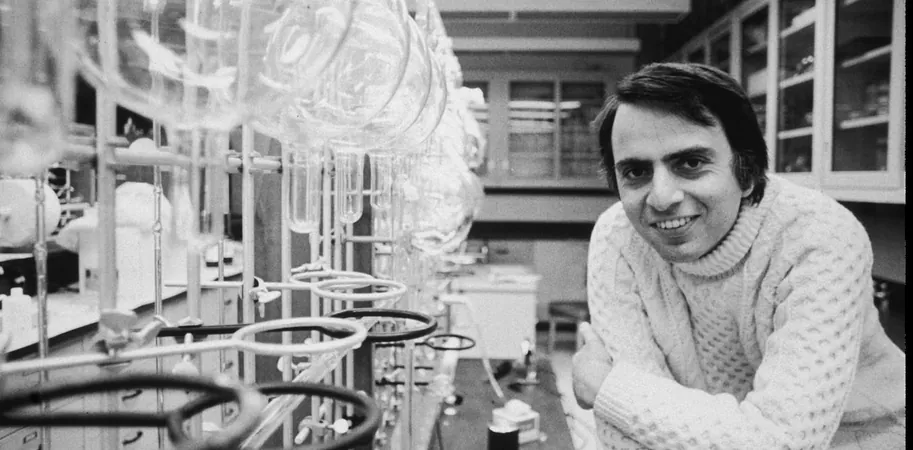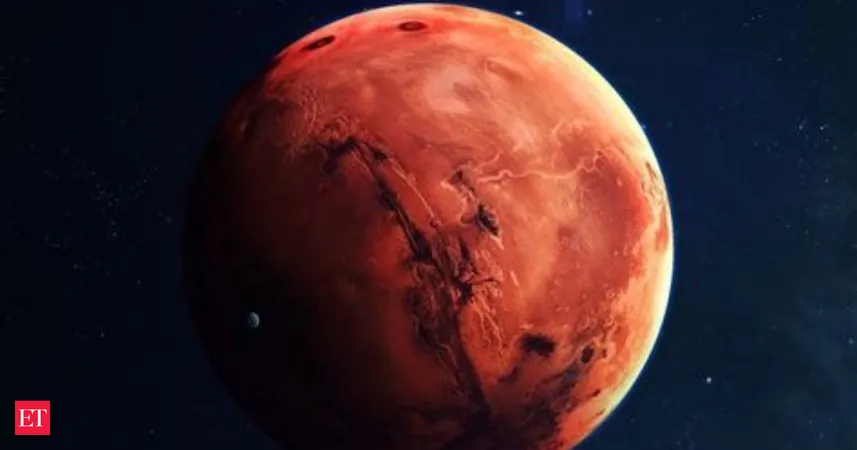
The Enduring Legacy of Carl Sagan: More Than Just Cosmos
2024-11-05
Author: Olivia
Introduction
As the world approaches the celebration of what would have been Carl Sagan’s 90th birthday on November 9, 2024, it’s essential to reflect on the profound and lasting impact he left on science and society before his untimely passing in 1996 at the age of 62.
While many remember Sagan as the charismatic co-creator and host of the groundbreaking 1980 television series “Cosmos,” which captivated audiences worldwide, his contributions to scientific thought and education extend far beyond this iconic show. Sagan was a prolific author, known for his influential works, including the best-selling novel “Contact” and the Pulitzer Prize-winning “The Dragons of Eden.” He also played a significant role in elevating public interest in astronomy, enchanting millions through appearances on popular platforms like “The Tonight Show.”
However, beyond his fame as a science communicator, Sagan was a trailblazing scientist whose insights and advocacy continue to resonate today. He authored over 600 scientific papers and championed the birth of new disciplines, inspiring numerous generations of scientists and enthusiasts alike. As a planetary astronomer, I find it remarkable that Sagan’s unique blend of creativity, comprehensive knowledge, and commitment to inquiry was a rare phenomenon during his lifetime—and arguably remains so even now.
Pioneering Scientific Achievements
In the 1960s, when knowledge about Venus was scarce, Sagan's research shed light on the extreme conditions of our planetary neighbor. He demonstrated how the greenhouse effect in Venus’s thick carbon dioxide atmosphere leads to surface temperatures that average a scorching 870 degrees Fahrenheit (465 degrees Celsius). This work continues to serve as a crucial warning about the potential dangers posed by fossil fuel emissions here on Earth.
Sagan also elucidated the reasons behind seasonal changes in Mars' brightness, dispelling previous misconceptions attributing these shifts to vegetation or volcanic activity. His groundbreaking analysis identified wind-blown dust as the culprit behind these variations.
Moreover, Sagan’s work extended to examining the potential climatic consequences of nuclear warfare. He and his students explored how detonating nuclear bombs could inject massive amounts of soot into the atmosphere, resulting in a dramatic cooling effect known as “nuclear winter.”
His visionary contributions to astrobiology, the study of potential life beyond Earth, were equally transformative. In collaboration with researcher Bishun Khare at Cornell, he conducted experiments showcasing how vital organic compounds could form under conditions replicating those of other planetary bodies, laying the groundwork for future extraterrestrial exploration.
Sagan’s expansive vision didn’t stop at our solar system. He was a passionate advocate for extraterrestrial intelligence (ETI) research and played a pivotal role in establishing the Search for Extraterrestrial Intelligence (SETI) project. His efforts led to the creation of the instructive “Golden Records,” affixed to the Voyager and Pioneer spacecraft, designed to communicate humanity's presence to any extraterrestrial civilizations that might encounter them.
Advocacy for Science and Society
Not only was Sagan a monumental figure in scientific research, but he also emerged as a prominent advocate for various pressing societal issues. His impassioned testimony before Congress on climate change, his vocal opposition to nuclear arms proliferation, and his calls for international dialogue in space endeavors showcased his commitment to using science as a vehicle for societal betterment.
Through his significant writings, particularly “The Demon-Haunted World: Science as a Candle in the Dark,” Sagan urged the public to engage rigorously with scientific inquiry, challenging individuals to scrutinize their beliefs and seek truth through evidence. This work remains a crucial resource in our current age, marked by misinformation and skepticism.
Legacy and Recognition
While Sagan's influence can be measured through the ongoing citations of his work—accumulating over 1,000 citations a year—it is in the spirit of curiosity and scientific advocacy that his true legacy thrives. Notably, he was nominated for the National Academy of Sciences but faced exclusion, a decision driven less by scientific merit and more by personal envy among peers—a blemish that still stains the institution's reputation.
Nevertheless, the legacy of Carl Sagan is inextinguishable. He inspired countless scientists and non-scientists alike, bridging the gap between complex scientific concepts and public visibility. As we approach the 90th anniversary of his birth, may we renew our commitment to the values he championed: truth-seeking, rigorous inquiry, and a passionate pursuit of knowledge. Remembering Sagan goes beyond homage; it’s a clarion call to embrace science, advocate for its importance, and imagine the possibilities within the universe.









 Brasil (PT)
Brasil (PT)
 Canada (EN)
Canada (EN)
 Chile (ES)
Chile (ES)
 España (ES)
España (ES)
 France (FR)
France (FR)
 Hong Kong (EN)
Hong Kong (EN)
 Italia (IT)
Italia (IT)
 日本 (JA)
日本 (JA)
 Magyarország (HU)
Magyarország (HU)
 Norge (NO)
Norge (NO)
 Polska (PL)
Polska (PL)
 Schweiz (DE)
Schweiz (DE)
 Singapore (EN)
Singapore (EN)
 Sverige (SV)
Sverige (SV)
 Suomi (FI)
Suomi (FI)
 Türkiye (TR)
Türkiye (TR)